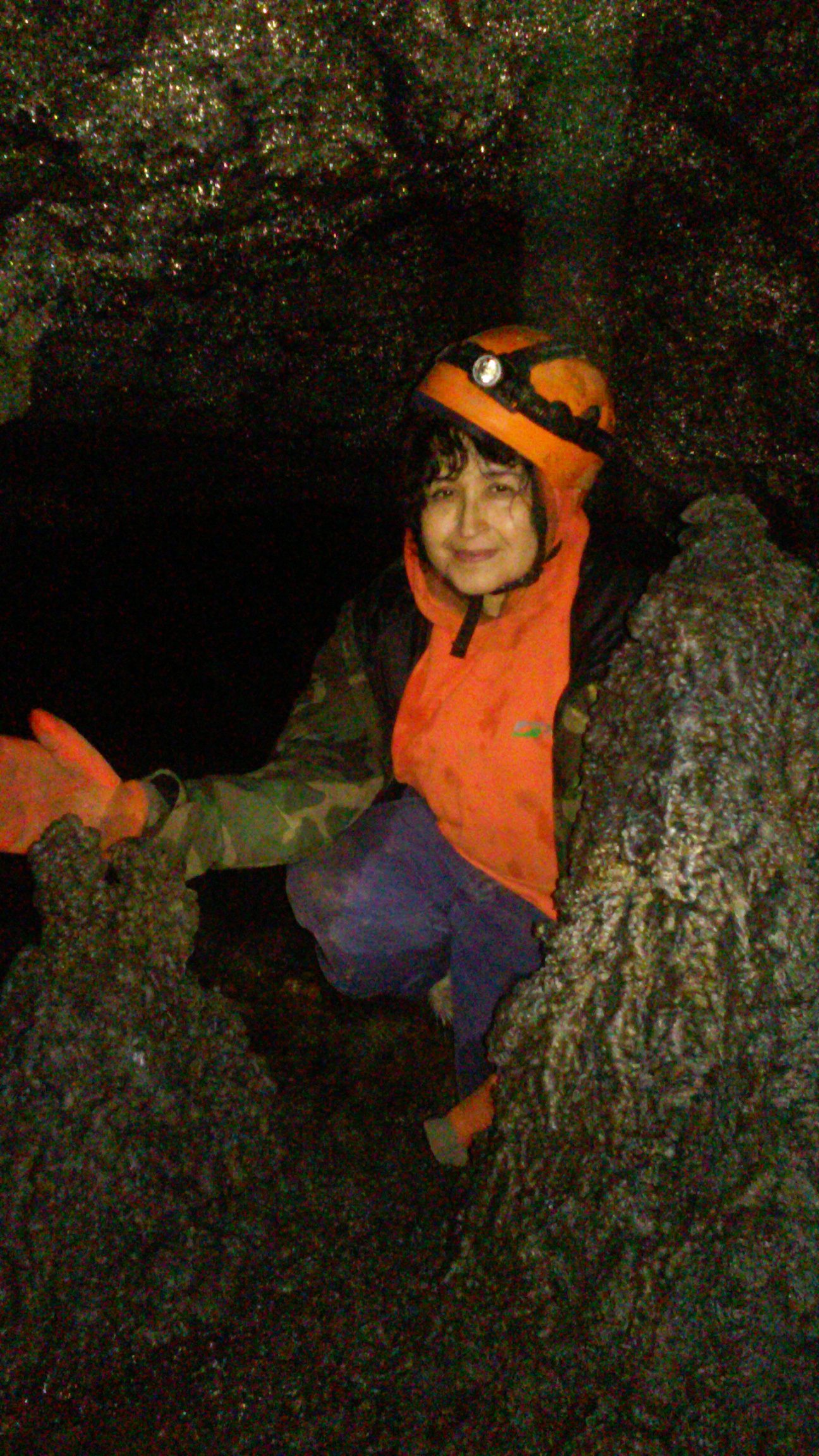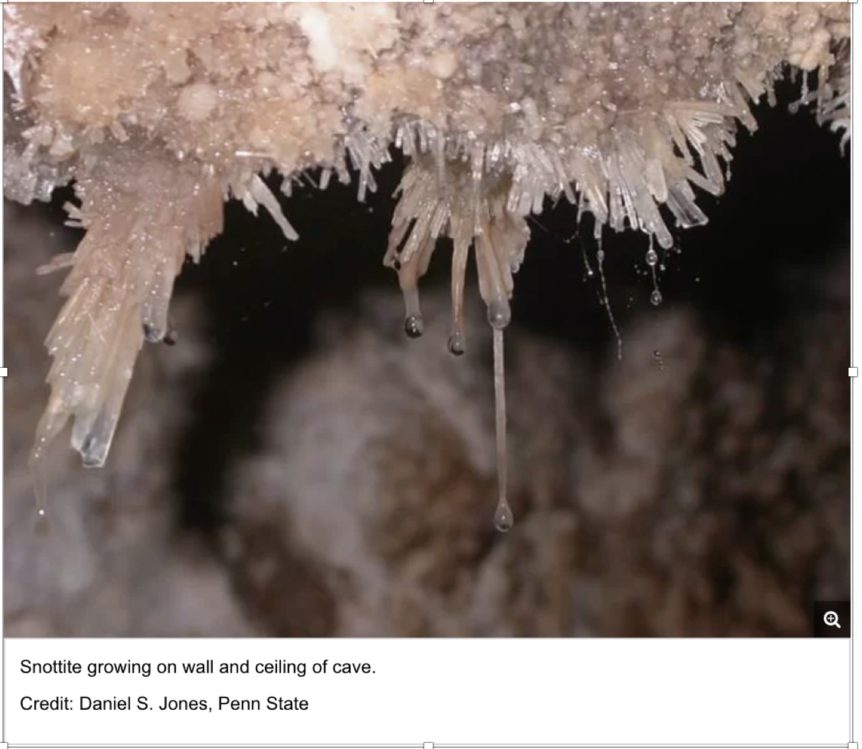Caves are fantastic portals
to some of Mother Earth's ancient history. And these caves provide a geological display of mystical beauty. Here's how cave-making microbes contribute to some of these sculptures of nature.
<H2>Caves form in several ways.</H2>
<H4>Lava tubes</H4>that snake underneath earth's surface, are carved out from rivers of molten rock that result from volcanic eruptions of past epochs.
<H4>Limestone caves </H4> were created from the accumulated remains of corals and other marine creatures. Rainwater and snow melt seep into the ground and absorb large amounts of carbon dioxide. And this carbon dioxide is produced from decaying marine creatures.
The water and carbon dioxide create carbonic acid which carves stunning limestone caves over the eons.
<H4>But, there are also cave-making microbes that create caves!</H4>The cave-making microbes are hydrogen sulfide bacteria that create sulfuric acid from their metabolism. These microbes include Thiomonas thermosulfata, which forms a type of stalagtite, oozing with sulfuric acid.
<H5>Geologists have called these formations snottites.</H5>
A geologist named Carol Hill established that microorganisms that consumed sulfur, created sulfuric acid that contributed to creating caves, such as the ones in Lechuguilla, New Mexico. This bacterium is known to form thick biofilms that drip down to form “snottites”.
These microbes also form thick filamentous mats in cave streams and pools.
From oxidizing the sulfur in the cave, these bacteria form sulfuric acid, which causes their “snottites” to have a pH of 0-1. And this acidic excretion of sulfuric acid has provided these unique microbes the tools for etching out caverns. In regard to the slime that they form, according to geologist Diana Northrup, "They're really cool because when you shine your light on them at certain times of the year it looks like somebody has silvered the walls.
"It's just breathtakingly gorgeous."
Much like the silicon beast, the Horta, in Star Trek's TOS, "The Devil in the Dark", Thiomonas thermosulfata creates acid from its own digestive process, and thus travels with a personal belt of caver tools, to create tunnels within the nooks residing underneath our feet.
In honor of Winter Solstice and the New Year;
Take a trip to the center of the earth soon. And enjoy the rich warm darkness in Mother Earth's underbelly. And shine your helmet light upon the thriving microbes that paint silvered walls and drip crystalline droplets that delight and invite us to explore her mysteries.
By JeM YinJoy, Ph.D.


JeM YinJoy exploring an Oregon Cave.










Comments 2
This so very interesting! Thanks fir sharing.
Amazingly beautiful.